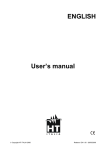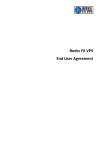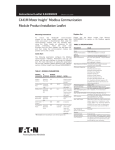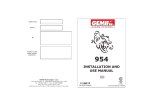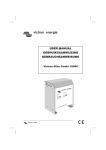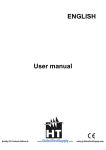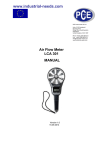Download Manual
Transcript
ENGLISH User manual 1.800.561.8187 © Copyright HT ITALIA 2010 www. .com [email protected] Release EN 1.00 - 22/02/2010 HT78 Table of contents: 1. SAFETY PRECAUTIONS AND PROCEDURES ..........................................................2 1.1. 1.2. 1.3. 1.4. 2. GENERAL DESCRIPTION ...........................................................................................4 2.1. 2.2. 3. TRMS and MEAN VALUE measuring instruments............................................................ 4 TRUE ROOT MEAN SQUARE VALUE and CREST FACTOR definitions........................ 4 PREPARATION FOR USE ...........................................................................................5 3.1. 3.2. 3.3. 3.4. 4. Preliminary ........................................................................................................................ 2 Before use ......................................................................................................................... 3 After use ............................................................................................................................ 3 Measuring (overvoltage) categories definitions................................................................. 3 Initial .................................................................................................................................. 5 Power supply..................................................................................................................... 5 Calibration ......................................................................................................................... 5 Storage.............................................................................................................................. 5 OPERATING INSTRUCTIONS.....................................................................................6 4.1. Instrument description ....................................................................................................... 6 4.1.1. 4.2. 4.2.1. 4.2.2. 4.2.3. 4.2.4. 4.2.5. 4.2.6. 4.3. General informations ....................................................................................................... 12 Batteries replacement ..................................................................................................... 12 Cleaning .......................................................................................................................... 12 End of life ........................................................................................................................ 12 TECHNICAL SPECIFICATIONS ................................................................................13 6.1. Characteristics................................................................................................................. 13 6.1.1. 6.1.2. 6.2. 6.3. Safety........................................................................................................................................ 13 General data ............................................................................................................................. 13 Environmental conditions ................................................................................................ 14 6.2.1. Climatic conditions.................................................................................................................... 14 Accessories ..................................................................................................................... 14 6.3.1. 7. AC Current measurement........................................................................................................... 9 Leakage current measurement on Single phase system ......................................................... 10 Leakage current measurement on Three phase system.......................................................... 11 MAINTENANCE .........................................................................................................12 5.1. 5.2. 5.3. 5.4. 6. Range and ON/OFF selector...................................................................................................... 7 D-H key....................................................................................................................................... 7 FILTER selector.......................................................................................................................... 7 LOCK selector ............................................................................................................................ 7 AutoPowerOFF ........................................................................................................................... 7 DC analogical output .................................................................................................................. 8 How to perform the measurements ................................................................................... 9 4.3.1. 4.3.2. 4.3.3. 5. Front panel.................................................................................................................................. 6 Description of parts ........................................................................................................... 7 Standard accessories ............................................................................................................... 14 SERVICE....................................................................................................................15 7.1. 7.2. Warranty conditions......................................................................................................... 15 Service ............................................................................................................................ 15 1.800.561.8187 www. EN.com -1 [email protected] HT78 1. SAFETY PRECAUTIONS AND PROCEDURES This meter complies with IEC/EN61010-1. For your own safety and in order to avoid damaging the instrument, you’re recommended to keep to the instructions contained in this manual and read carefully all the notes preceded by the symbol . Take extreme care for the following conditions while measuring: • Do not measure voltage or current in humid or wet environment. • Do not use the meter in presence of explosive gas (material), combustible gas (material), steam or dust. • Insulate yourself from the object to be tested. • Do not touch exposed metal (conductive) parts such as sockets, fixing objects, circuits, etc. • If you detect anomalies of testing end (metal part) and attachment of the meter such as breakages, deformations, foreign substances, no display, etc., do not take any measurement. The followings symbols are used on meter and user’s manual Caution: refer to the instruction manual. An incorrect use may damage the tester or its components. High Voltage ranger: electrical shock risk. Double insulated instrument. AC Current DC Voltage 1.1. PRELIMINARY • This apparatus has been designed for use in an environment of pollution degree 2. Indoor use • It measures AC CURRENT on CAT II 600V or CAT III 300V plants. For overvoltage and categories please see § 1.4 • You must comply with the usual safety regulations aimed at: protecting you against the dangerous electric current and protecting the instrument against an incorrect operation • Do not test or connect to any circuit whose current exceeds the specified overload protection • Make sure that the batteries are installed correctly 1.800.561.8187 www. EN.com -2 [email protected] HT78 1.2. BEFORE USE Always keep to the instructions contained in this manual: CAUTION Non compliance with the warnings and/or the instructions may damage the tester and/or its components or injure the operator. • • • • When the clamp is connected to the circuits to be tested, never touch unused terminals When measuring current, any strong current near or close to the clamp jaw will affect the accuracy When measuring current, always put the tested conductor in the middle of the clamp jaw in order to obtain a more accurate reading If the reading value or the sign indication remains unchanged during the measurement, check if the HOLD function is active 1.3. AFTER USE • Once the measurements are completed, turn OFF the meter • If you expect not to use the clamp for a long time, remove the batteries 1.4. MEASURING (OVERVOLTAGE) CATEGORIES DEFINITIONS The norm IEC/EN61010-1: Safety requirements for electrical equipment for measurement, control and laboratory use, Part 1: General requirements, defines what measuring category, usually called overvoltage category, is. On § 6.7.4: Measuring circuits, it says: (OMISSIS) circuits are divided into the following measurement categories: • Measurement category IV is for measurements performed at the source of the lowvoltage installation. Examples are electricity meters and measurements on primary overcurrent protection devices and ripple control units. • Measurement category III is for measurements performed in the building installation. Examples are measurements on distribution boards, circuit breakers, wiring, including cables, bus-bars, junction boxes, switches, socket-outlets in the fixed installation, and equipment for industrial use and some other equipment, for example, stationary motors with permanent connection to fixed installation. • Measurement category II is for measurements performed on circuits directly connected to the low voltage installation. Examples are measurements on household appliances, portable tools and similar equipment. • Measurement category I is for measurements performed on circuits not directly connected to MAINS. Examples are measurements on circuits not derived from MAINS, and specially protected (internal) MAINS-derived circuits. In the latter case, transient stresses are variable; for that reason, the norm requires that the transient withstand capability of the equipment is made known to the user. 1.800.561.8187 www. EN.com -3 [email protected] HT78 2. GENERAL DESCRIPTION HT78 meter can performs the herewith features: • • • • AC TRMS current measurement up to 3000A AC leakage current measurement with 0.1mA resolution DC voltage analogical output for connection with external data loggers 150Hz low-pass filter for reduce harmonic components of input signal Each feature can be selected by using rotation selector on meter’s front panel. The Data HOLD, FILTER and LOCK functions are still available (see § 4.2). The selected quantity appears on a LCD display with indication of measurement units and functions. Analogical bargraph it’s also displayed on meter. The meter disposes of an Auto Power Off function consisting in an automatic switching off 10 minutes after last operation. 2.1. TRMS AND MEAN VALUE MEASURING INSTRUMENTS Safety testers for alternate quantities are divided into two big families: • MEAN VALUE instruments: instruments which measure only the value of the wave at the fundamental frequency (50 or 60 Hz). • TRUE ROOT MEAN SQUARE instruments, also defined as TRMS: instruments which measure the true root mean square value of the quantity under test. In presence of a perfectly sinusoidal wave, both families provide identical results. In presence of distorted waves, instead, the readings are different. Mean value instruments provide only the value of the fundamental wave while True RMS instruments provide the value of the entire wave, including harmonics (within the passband of the instrument). Accordingly, if the same quantity is measured with both kinds of instruments, the measured values are identical only if the wave is purely sinusoidal. Should it be distorted, True RMS instruments provide higher values than medium value instruments. 2.2. TRUE ROOT MEAN SQUARE VALUE AND CREST FACTOR DEFINITIONS The current effective value is defined as follows: “In an interval of time equivalent to a period, an alternate current with effective value having an intensity of 1A, by passing on a resistor, disperses the same energy which would be dispersed in the same period of time by a direct current having an intensity of 1A”. From this definition comes the numerical 1 expression: G= T t 0 +T ∫g 2 (t )dt The effective value is indicated as RMS (root mean square). t0 The Crest Factor is defined as the ratio between the Peak Value of a signal and its Gp effective value: CF (G)= . This value varies according to the waveform of the signal, G RMS for a purely sinusoidal wave it’s worth 2 =1.41. In presence of distortions the Crest Factor assumes higher values as long as the wave distortion is higher. 1.800.561.8187 www. EN.com -4 [email protected] HT78 3. PREPARATION FOR USE 3.1. INITIAL The meter has been checked from a mechanical and electrical point of view before shipment. Every care has been taken to make sure that the instrument reaches you in perfect conditions. However, it’s advisable to make a rapid check in order to detect eventual damages which may have occurred in transit. Should this be the case, enter immediately the usual claims with the carrier. Make sure that all the accessories listed in § 6.3.1 are contained in the package. In case of discrepancies contact the dealer. In case of returning of the tester please keep to the instructions given in § 7. 3.2. POWER SUPPLY The instrument is batteries supplied. 2x1.5V type AAA LR03 are included in the package. Battery life: about 200 hours. When batteries are low, the symbol “ ” appears on the display. Replace them immediately, following the instructions given in § 5.2 3.3. CALIBRATION The tester complies with the technical features listed in this manual. Its performances are guaranteed for one year. 3.4. STORAGE In order to guarantee the accuracy of the measurements, after a period of storage in extreme environmental condition, wait for the necessary time so that the tester returns to normal measuring conditions (see environmental specifications, § 6.2.1). 1.800.561.8187 www. EN.com -5 [email protected] HT78 4. OPERATING INSTRUCTIONS 4.1. INSTRUMENT DESCRIPTION 4.1.1. Front panel LEGEND: 1. 2. 3. 4. 5. 6. 7. 8. 9. Inductive clamp jaw Holes for carrying straps LOCK selector Selector with measurement ranges and ON/OFF feature Jaw trigger FILTER selector D-HOLD key LCD display DCV analogical output terminal Fig. 1: Instrument description 1.800.561.8187 www. EN.com -6 [email protected] HT78 4.2. DESCRIPTION OF PARTS 4.2.1. Range and ON/OFF selector Rotate the function selector from “OFF” position to any other position to turn on the meter. Rotate again the selector to “OFF” position to switch off the meter 4.2.2. D-H key Press D-HOLD key to enable Data HOLD feature. The “DH” message is shown and the measured value is frozen on the display. Press the same key to exit from the function. 4.2.3. FILTER selector Move the “FILTER” selector to enable (ON) or disable (OFF) the “Low-pass 150Hz filter” during an AC current measurement. In this condition a low-pass filter with cut-off frequency of 150Hz is active on meter in order to reduce the harmonic components of input signal. It is reccomanded always to eneable this feature to perform accurate and stable measurement of leakage current 4.2.4. LOCK selector While slowly closing CT during the measurement on strong magnetic fields generated by big currents, there might be a case where CT cannot be closed completely. In this case use the LOCK selector to lock/unlock the jaws of clamp durino a measurement 4.2.5. AutoPowerOFF In order to preserve the internal batteries, the meter automatically switch off after about 10 minutes of idleness. Press the D-H key or turn on again the meter after 10 second from switch off to restore of normal functionality. The AutoPwerOFF feature is automatically disabled by the meter during the connection to DCV analogical output bt external datalogger 1.800.561.8187 www. EN.com -7 [email protected] HT78 4.2.6. DC analogical output The meter is designed with a DC voltage analogical output depending on the measured current value and can be used for connection with external data loggers, digital multimeters, etc.. (see Fig. 2) by using customized cables CAUTION Do not apply any vltage to the DCV output of metere durino the recording operation Fig. 2: Connection of meter with external logger 1. Select the desired measuring range and consider the herewith conversion values: AC current range 300mA 3A 30A 300A 3000A DC output voltage range 1mV/1mA 1mV/0.01A 1mV/0.1A 1mV/1A 1mV/10A Table 1: Conversion values of DCV analogical output 2. Connect the external logger to the DCV output of meter 3. Perform the current measurement (see § 4.3) 1.800.561.8187 www. EN.com -8 [email protected] HT78 4.3. HOW TO PERFORM THE MEASUREMENTS 4.3.1. AC Current measurement CAUTION Do not perform any AC current measurement on circuit with nominal voltage higher to 500V to round to avoid possible electrical shocks and to damage the meter Fig. 3: Taking AC current measurement 1. Select a measurement range among the 3A, 30A, 300A or 3000A options 2. Move the FILTER selector on ON position to activate the “Low-pass 150Hz filter” (see § 4.2.3) 3. Open the clamp and put the conductor to be tested in the middle of the clamp jaw, then reading will be displayed 4. For using of Data HOLD and see § 4.2.2. For using of analogical output see § 4.2.6 1.800.561.8187 www. EN.com -9 [email protected] HT78 4.3.2. Leakage current measurement on Single phase system CAUTION Do not perform any AC current measurement on circuit with nominal voltage higher to 500V to round to avoid possible electrical shocks and to damage the meter Fig. 4: Taking leakage current measurement on Single phase systems 1. Select the 300mA range on the meter 2. Move the FILTER selector on ON position to activate the “Low-pass 150Hz filter” (see § 4.2.3) 3. Open the clamp and put inside: ¾ The cables L1 and N if use the Differential method as shown in ¾ Fig. 4 obtaining the result as addition of instantaneous values of the currents flowing in the wires ¾ The PE conductor if use the Direct method 4. The measured result is shown at display 5. For using of Data HOLD and see § 4.2.2. For using of analogical output see § 4.2.6 1.800.561.8187 www. EN.com - 10 [email protected] HT78 4.3.3. Leakage current measurement on Three phase system CAUTION Do not perform any AC current measurement on circuit with nominal voltage higher to 500V to round to avoid possible electrical shocks and to damage the meter Fig. 5: Taking leakage current measurement on Three phase systems 1. Select the 300mA range on the meter 2. Move the FILTER selector on ON position to activate the “Low-pass 150Hz filter” (see § 4.2.3) 3. Open the clamp and put inside: ¾ The cables L1, L2, L3 and N if use the Differential methos as shown in Fig. 5 obtaining the result as addition of instantaneous values of the currents flowing in the wires ¾ The PE conductor if use the Direct method 4. The measured result is shown at display 5. For using of Data HOLD and see § 4.2.2. For using of analogical output see § 4.2.6 1.800.561.8187 www. EN.com - 11 [email protected] HT78 5. MAINTENANCE 5.1. GENERAL INFORMATIONS 1. This clamp is an accured instrument. Whether in use or in storage, please do not exceed the specification requirements to avoid possible damages or dangers. 2. Do not place this meter at high temperatures or humidity or expose it to direct sunlight. 3. Be sure to turn off the meter after use. If you expect not to use the tester for a long time, remove the battery in order to avoid leakages of battery liquid that would damage the internal parts. 5.2. BATTERIES REPLACEMENT When “ ” appears on the display, replace the batteries WARNING Only expert and trained technicians must perform this operation. Remove the test leads or the conductor under test before replacing the battery. 1. 2. 3. 4. 5. 6. 7. Switch off the meter rotate the selector in “OFF” position Remove the cable from the jaws Remove the screw from the battery cover, and detach the batteries cover Remove the batteries Replace batteries with a same type new one (see § 6.1.2). Take care to polarity Replace the battery cover and screw Use the appropriate battery disposal methods for Your area 5.3. CLEANING For cleaning the instrument use a soft dry cloth. Never use a wet cloth, solvents or water, etc. 5.4. END OF LIFE CAUTION: this symbol indicates that equipment, its accessories and batteries shall be subject to a separate collection and correct disposal. 1.800.561.8187 www. EN.com - 12 [email protected] HT78 6. TECHNICAL SPECIFICATIONS 6.1. CHARACTERISTICS Accuracy is indicated as [% rdg + (number of dgt) * resolution] referred to: 23°C(73°F) ± 5°C(41°F); RH< 80% AC TRMS Current Range 300mA 3A 30A 300A 3000A Resolution 0.1mA 0.001A 0.01A 0.1A 1A Accuracy Bandwidht ±(1.5%rdg+ 8dgt) 50 ÷60Hz Max input current 3Arms 30Arms 300Arms 3000Arms ±(2.0%rdg+ 8dgt) DC analogical output Range 300mA 3A 30A 300A 3000A Resolution 1mV/1mA 1mV/0.01A 1mV/0.1A 1mV/1A 1mV/10A Accuracy Bandwidht ±(1.5% FS) 50 ÷60Hz Max input current 3Arms 30Arms 300Arms 3000Arms FS = full scale of any range Internal filter Type of filter Low-pass 6.1.1. Safety Comply with: Insulation: Pollution degree: Max height: Installation category: Cut-off frequency 150Hz IEC/EN61010-1, IEC/EN61010-2-032 double insulation 2 2000m (6562 ft) CAT II 600V, CAT III 300V to the ground 6.1.2. General data Mechanical characteristics Size: 341(L) x 194(W) x 52(H)mm ; 13(L) x 8(W) x 2(H) inch Weight (including batteries): 1.9kg (67 ounces) Max conductor size: 108mm (4”) Supply Batteries type: Low battery indication: Battery life: AutoPowerOFF: 2x1.5V alkaline batteries type AAA LR03 “ ” symbol is displayed when the level is low approx 200 hours of continuous use approx 10 minutes of idleness Display Characteristics: Sample rate: Conversion mode: Over range symbol: 4 LCD 3200 points plus decimal point, sign and bargraph 2 times/sec TRMS “O.L” indication at display 1.800.561.8187 www. EN.com - 13 [email protected] HT78 6.2. ENVIRONMENTAL CONDITIONS 6.2.1. Climatic conditions Reference temperature: 23 ± 5°C ; (73°F± 41°F) Operating temperature: 0 ÷ 40°C ; (32°F ÷ 104°F) Operating humidity: <80%RH Storage temperature: -10 ÷ 60°C ; (-44°F ÷ 140°F) Storage humidity: < 80%RH This product conforms to the prescriptions of the European directive on low voltage 2006/95/EEC (LVD) and to EMC directive 2004/108/EEC 6.3. ACCESSORIES 6.3.1. Standard accessories The content of a standard package is the following: • Instrument HT78 • Carrying bag • Batteries • Set of belt straps • User manual 1.800.561.8187 www. EN.com - 14 [email protected] HT78 7. SERVICE 7.1. WARRANTY CONDITIONS This equipment is guaranteed against material faults or production defects, in accordance with the general sales conditions. During the warranty period (one year), faulty parts may be replaced. The manufacturer reserves the right to decide either to repair or replace the product. In case of returning of the instrument, all transport charges must be paid by the customer. The instrument must be accompanied by a delivery note indicating the faults or reasons of returning. The returned tester must be packed in its original box. Any damage occurred in transit because of lack of original packaging will be debited to the customer. The manufacturer is not responsible for any damage against persons or things. Accessories and batteries are not covered by warranty. The warranty won’t be applied to the following cases: • Faults due to improper use of the equipment • Faults due to combination of the tester with incompatible equipment. • Faults due to improper packaging. • Faults due to servicing carried out by a person not approved by the company. • Faults due to modifications made without explicit authorisation of our technical department. • Faults due to adaptation to a particular application not provided for by the definition of the equipment or by the instruction manual. The contents of this manual cannot be reproduced in any form without our authorization. Our products are patented. Our logotypes are registered. We reserve the right to modify characteristics and prices further to technological developments. 7.2. SERVICE If the equipment doesn’t work properly, before contacting the SERVICE, test the batteries and change them if necessary. If the equipment still doesn’t work, make sure that your operating procedure complies with the one described in this manual. In case of returning of the instrument, all transport charges must be paid by the customer. The instrument must be accompanied by a delivery note indicating the faults or reasons of returning. The returned tester must be packed in its original box. Any damage occurred in transit because of lack of original packaging will be debited to the customer. 1.800.561.8187 www. EN.com - 15 [email protected]

















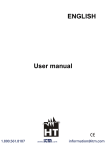

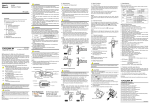

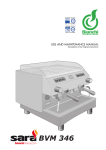



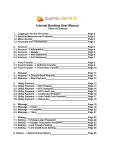
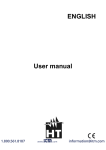
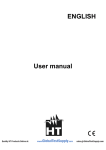
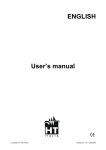
![Procedure to Use Global Online Banking [PDF, Size: 1008.0KB]](http://vs1.manualzilla.com/store/data/005964624_1-7b8de4c8b1d722b3319a8c3c6d4449e7-150x150.png)
